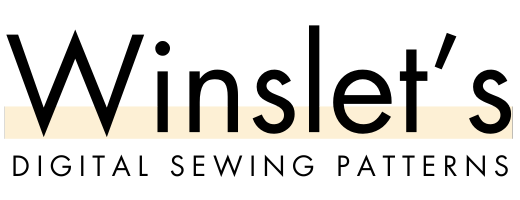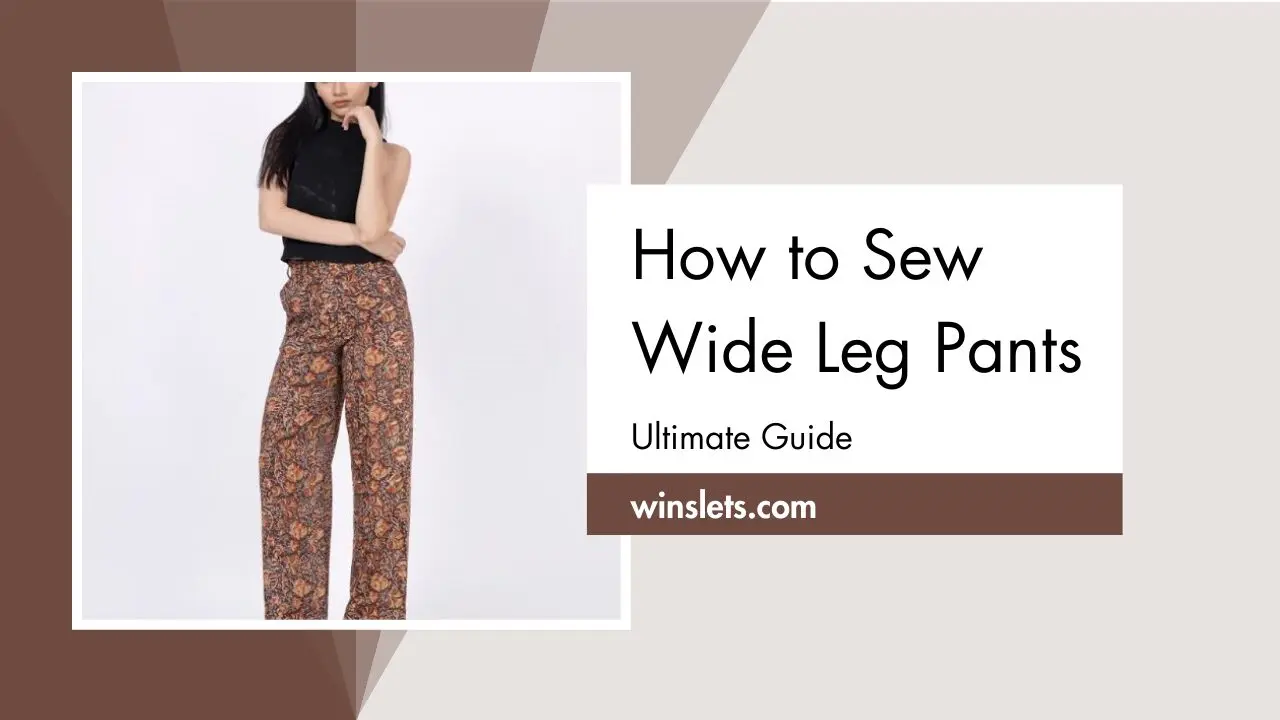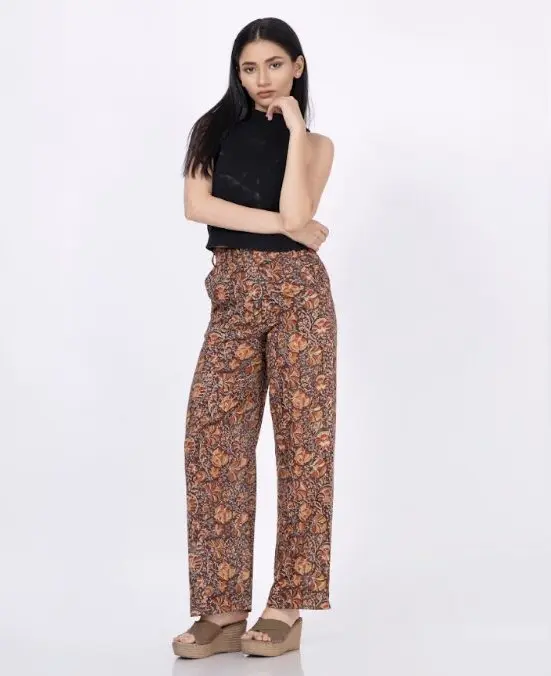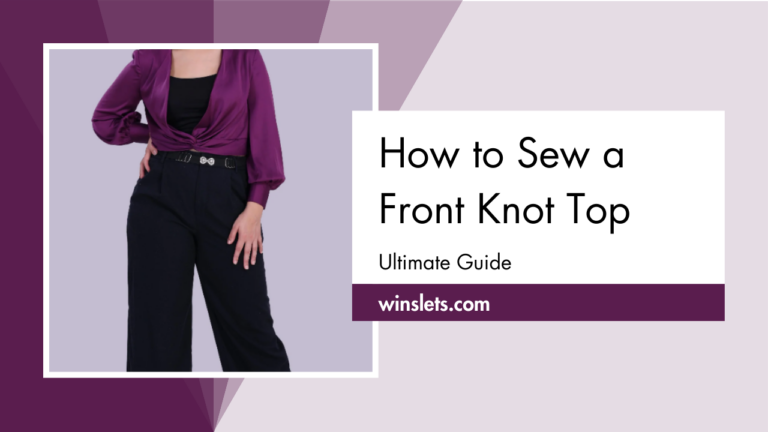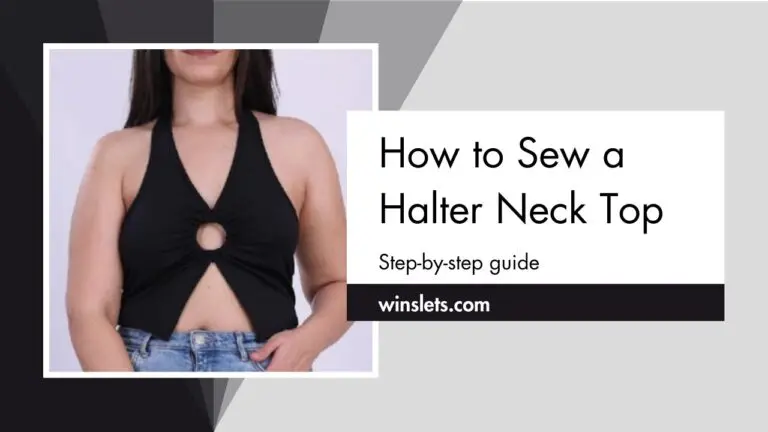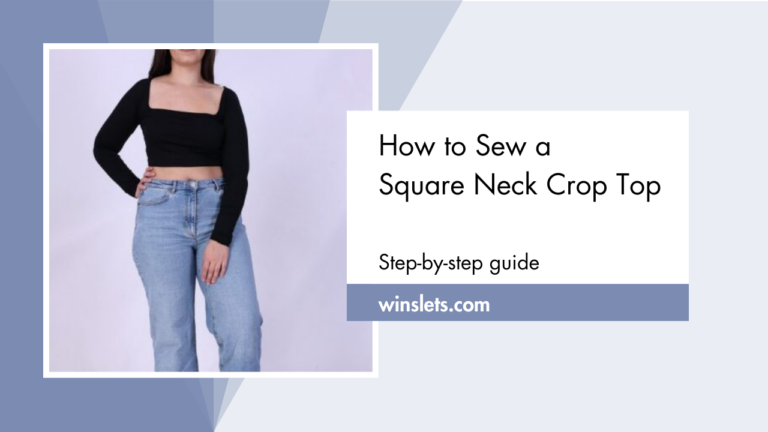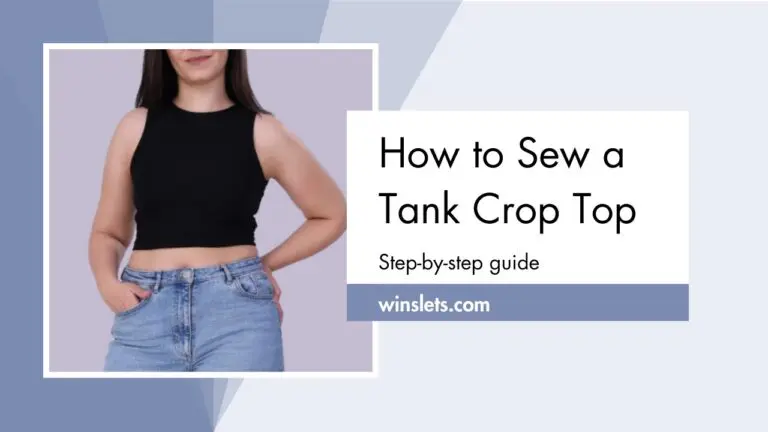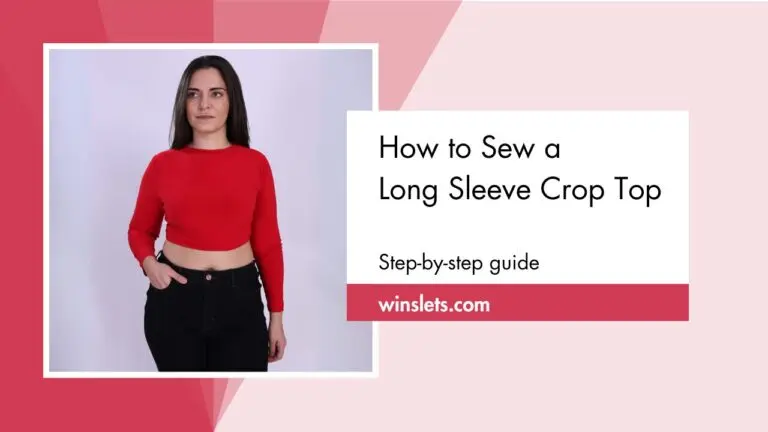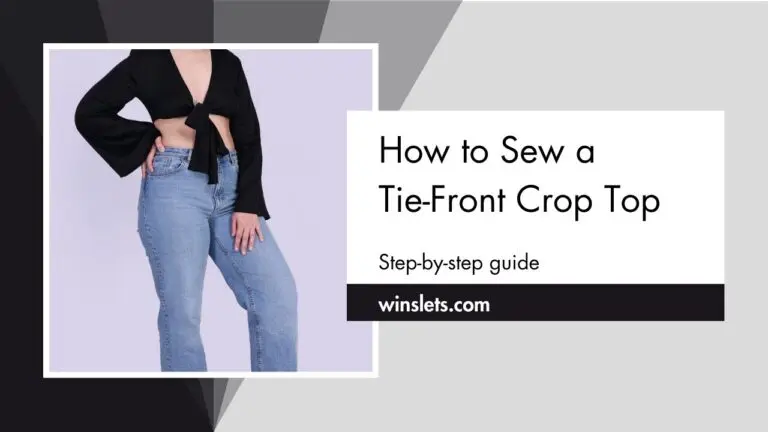How to Sew Wide Leg Pants?
In today’s post, I am sharing the process to sew wide leg pants. These wide leg pants are super comfortable and very easy to sew!
I used the Winslet’s MAYA Wide Leg Pants Pattern to make several pairs in solid colors and vibrant prints.
So, join me in this sewing adventure as I guide you through crafting your own pair.
What sewing supplies do you need to sew wide leg pants?
The basic supplies you need to sew wide leg pants are Sewing Pattern (I used Winslet’s MAYA Wide Leg Pants Pattern in this example), Sewing Machine, Tape Measure, Chalk, Shears, Pins, Iron, Needles, Thread (preferably 3-ply polyester), a Thread Cutter, a Zipper, Fusible Interfacing, Buttons, and a Buttonhole Presser Foot.
Fabric Recommendation
Can you distinguish between high-quality and mediocre pants? The key factor lies in the selection of fabric; trousers excel when crafted from lightweight materials, such as cotton, hemp, linen, and bamboo.
These fabrics provide breathability and comfort, making the pants suitable for warm weather. Additionally, their natural fibers offer excellent moisture-wicking properties, ensuring you stay cool and dry throughout the day.
The model above features a pant made with the Winslet’s MAYA Wide Leg Pants Pattern. The pants are crafted from 100% cotton (kalamkari) fabric offering versatility, breathability, comfort, great color retention, absorbency, strength, and a smooth feel. They won’t trap heat or build static and are budget-friendly.
Size Charts
The wide leg pants sewing pattern measurements for sizes (XS, S, M, L, XL, 2XL, or 3XL) are detailed below. Choose a size that corresponds most closely to your body measurements.
It’s worth noting that if your exact measurements are not listed in the table, you may want to consider ordering a size larger.
The size chart includes measurements in both inches and centimeters for your reference.
Body Measurements
| XS (inches) | XS (cm) | S (inches) | S (cm) | M (inches) | M (cm) | L (inches) | L (cm) | XL (inches) | XL (cm) | 2XL (inches) | 2XL (cm) | 3XL (inches) | 3XL (cm) | |
| Bust | 32 | 81.3 | 34 | 86.4 | 36 | 91.4 | 38 | 96.5 | 40 | 101.6 | 42 | 106.7 | 44 | 111.8 |
| Waist | 26 | 66.0 | 28 | 71.1 | 30 | 76.2 | 32 | 81.3 | 34 | 86.4 | 36 | 91.4 | 38 | 96.5 |
Final Garment Measurements
| XS (inches) | XS (cm) | S (inches) | S (cm) | M (inches) | M (cm) | L (inches) | L (cm) | XL (inches) | XL (cm) | 2XL (inches) | 2XL (cm) | 3XL (inches) | 3XL (cm) | |
| Waist Round | 26 | 66.04 | 28 | 71.12 | 30 | 76.2 | 32 | 81.28 | 34 | 86.36 | 36 | 91.44 | 38 | 96.52 |
| Hip Round | 36 | 91.44 | 38 | 96.52 | 40 | 101.6 | 42 | 106.68 | 44 | 111.76 | 46 | 116.84 | 48 | 121.92 |
| Full Length (Without Belt) | 38.75 | 98.42 | 39 | 99.06 | 39.25 | 99.69 | 39.5 | 100.33 | 39.75 | 100.96 | 40 | 101.6 | 40.25 | 102.23 |
Fabric Yield
| Width of the Fabric | XS (yards) | XS (meters) | S (yards) | S (meters) | M (yards) | M (meters) | L (yards) | L (meters) | XL (yards) | XL (meters) | 2XL (yards) | 2XL (meters) | 3XL (yards) | 3XL (meters) |
| 45” | 1.83 | 1.67 | 2.15 | 1.97 | 2.53 | 2.31 | 2.91 | 2.66 | 3.35 | 3.06 | 3.85 | 3.52 | 4.42 | 4.05 |
| 60” | 1.15 | 1.06 | 1.36 | 1.24 | 1.60 | 1.46 | 1.84 | 1.68 | 2.11 | 1.93 | 2.43 | 2.22 | 2.79 | 2.55 |
Steps To Follow For Sewing Wide Leg Pants
Let’s dive into the steps for sewing your very own unique wide leg pants:
Pattern Marking and Inventory
The fabric needs to be cut into following pieces:
A. Front – cut x2 fabric
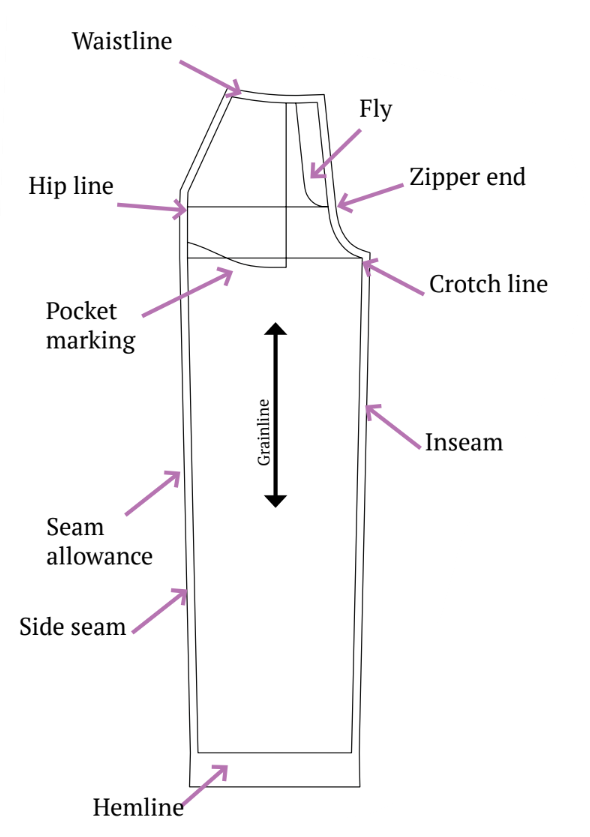

B. Back – cut x2 fabric
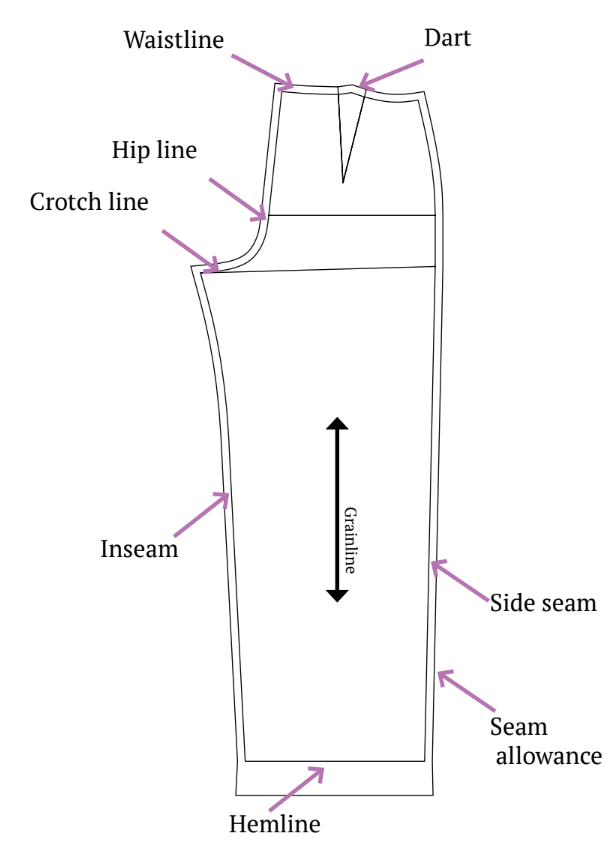
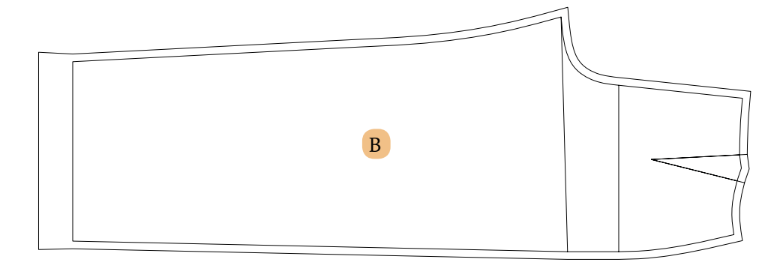
An inseam refers to the measurement from your crotch down to your ankle bone, essentially representing the length of your inner leg.
C. Pocket – cut x2 fabric
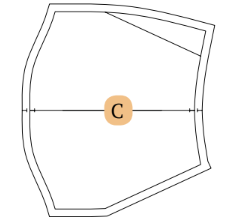
D. Fly Cover – cut x1 fabric

E. Fly – cut x1 fabric

F. Waist Belt – cut x1 fabric

G. Belt Loop – cut x1 fabric

Be sure to indicate all notches and design elements like darts and pleats on your fabric using the pattern pieces. When stitching the garment, carefully align the notches to ensure a proper match.
Cutting Layout
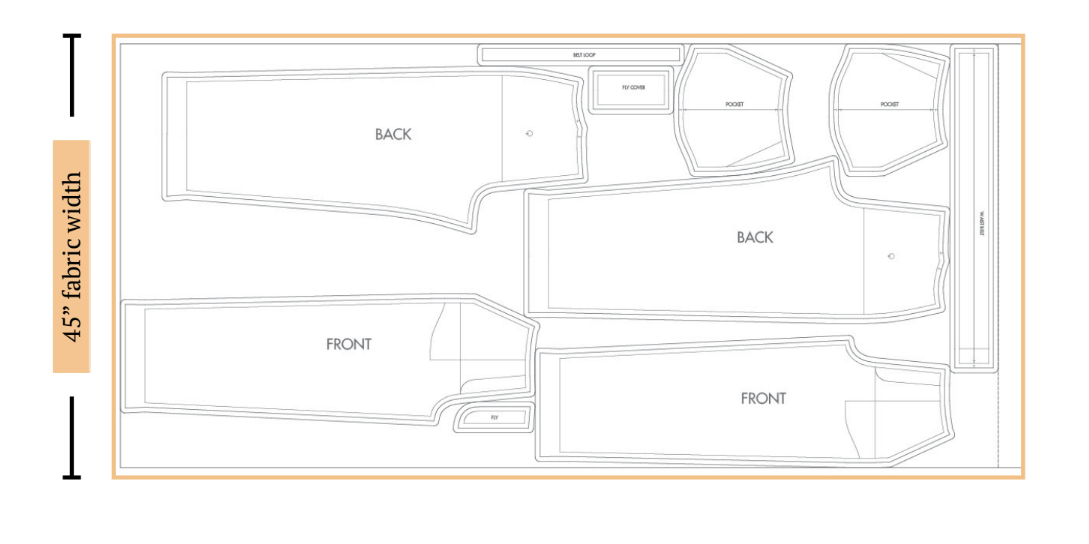
- Ensure the pattern layout is on-grain for fabric alignment.
- Use pins to secure fabric, aiding accurate cutting.
- If using fabric with nap or prints, purchase additional length.
Sewing Steps
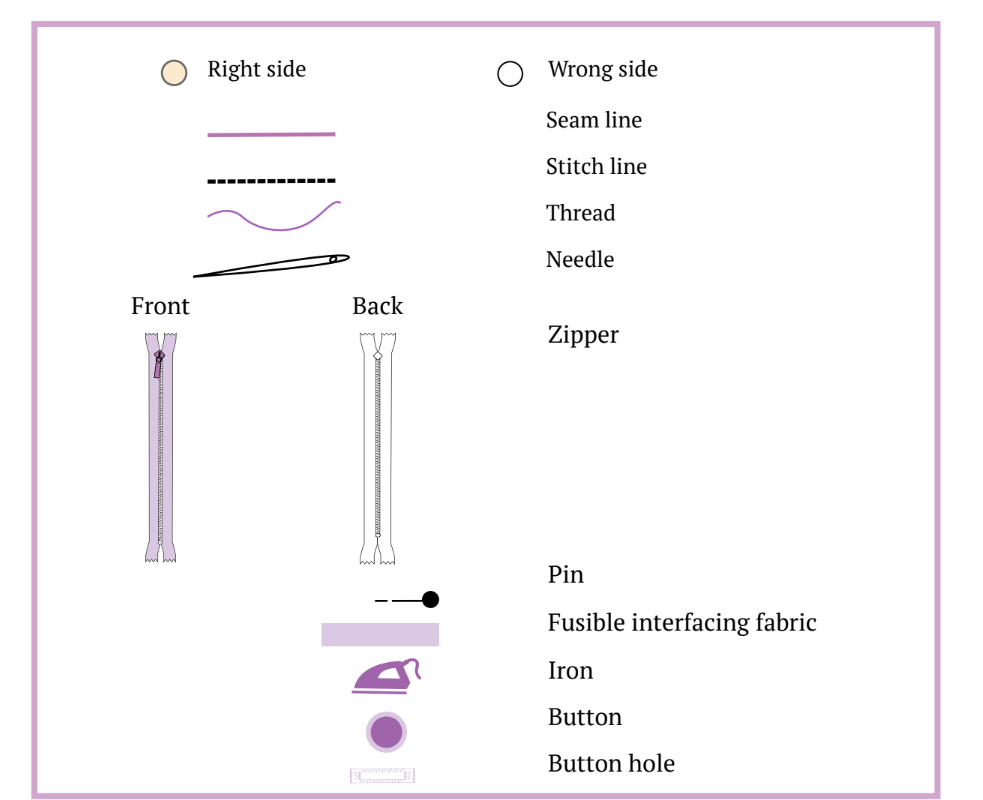

Step 1: Adding Side Pockets to Your Pants
1. Positioning the Left Pocket
Put the left pocket piece on the marked spot of the left front leg pocket with the right sides facing each other.
Use pins to hold them in place.
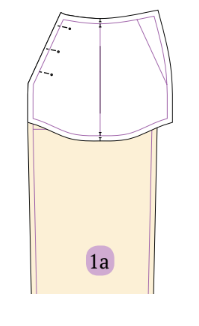
Sew along the marked line.
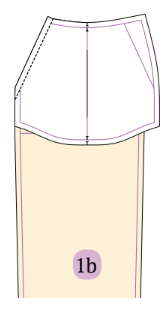
2. Making it Neat
Open the sewn parts and stitch the pocket’s inner edge.
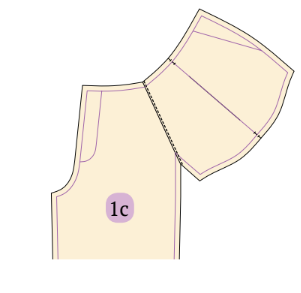
Turn the pocket and front leg piece, so the wrong sides are facing.
Press them down.
Sew along the edge of the pocket opening.
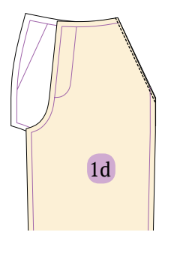
3. Adding the Other Side
Place the folded pocket piece on the front leg waistline with the right sides together.
Press it down.
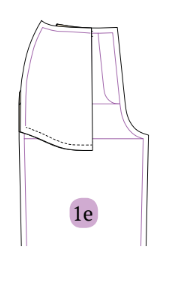
Secure both sides of the pocket opening with a few stitches.
Repeat the same steps for the other pocket piece.
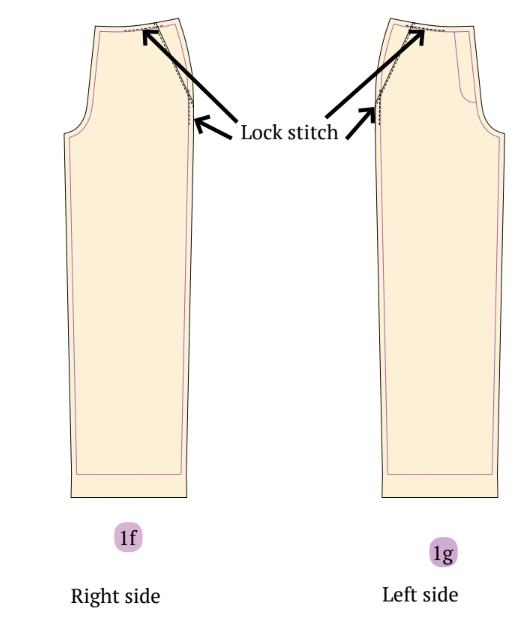
Step 2: Creating a Zipper Fly Closure
1. Preparing the Fly Cover

Fold the fly cover with the right sides together.

Sew the fly shape on one side.

Clip the seam allowance to shape the fly cover.
Turn the facing to the wrong side and use a pointy stick to shape it.

2. Attaching the Fly Piece
Place the fly piece on the left front leg with the right sides together.
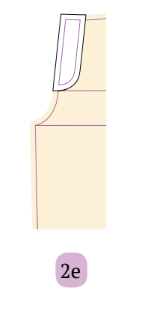
Sew them together.

Turn them to the wrong side and sew along the edges to secure it.
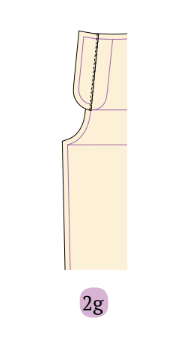
3. Adding the Zipper
Align the zipper right sides together at the edge seam line.
Sew on the other side of the zipper tape away from the seam line.
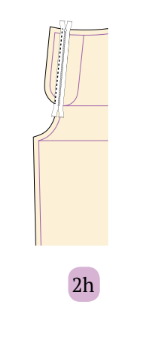
Place the open side of the fly cover on the unstitched zipper tape (wrong side).
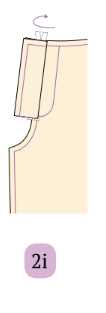
Turn them, facing the zipper at the front side, and sew on the seam line of the fly cover.
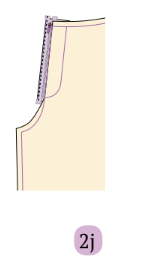
4. Completing the Fly
Fold the fly seam allowance of the other front leg piece inside.
Place it on the zipper and sew them together until the zipper end mark.
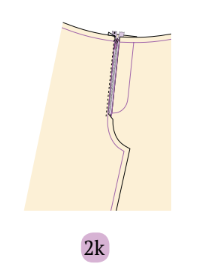
Place the front pieces right sides together and sew a short line from the zipper end notch to close the inner seam.
Place the back pieces right sides together and sew the crotch together.
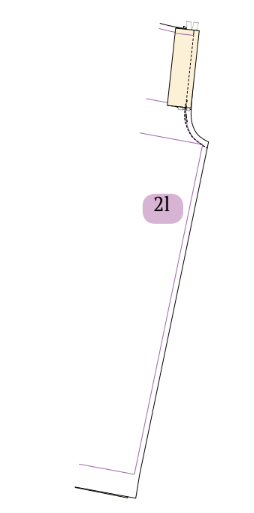
Open the zipper and sew on the fly line from the top, starting from the zipper end and sewing along the fly cover while leaving the fly cover free in the middle.
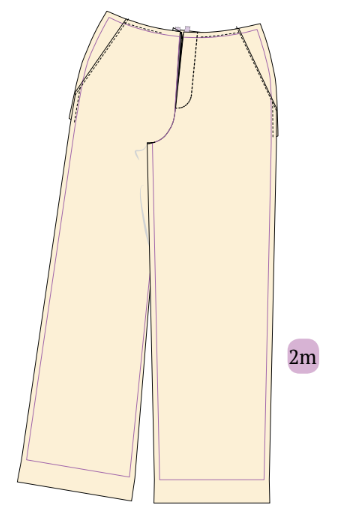
Step 3: Creating Darts in Your Fabric
1. Aligning and Stitching
Match the legs of the dart with the right sides together.
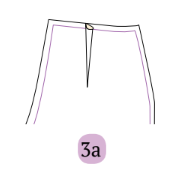
Stitch along the marked line on the wrong side of the fabric.
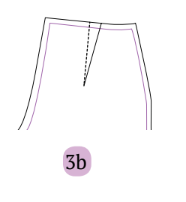
2. Finishing the Dart
Press the stitched dart flat to one side.
Repeat the same process for the other dart.
Step 4: Joining Back Pieces at the Crotch
Place both back pieces with the right sides facing each other.
Sew them together along the crotch line.
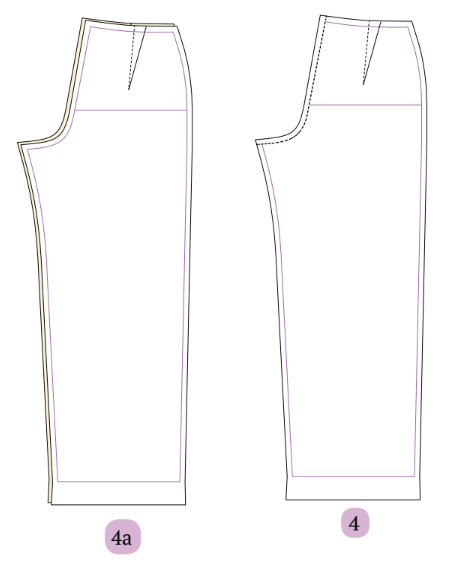
Step 5: Connecting Front and Back Pieces
Place the front and back pieces with the right sides facing each other.
Sew the side seams together.
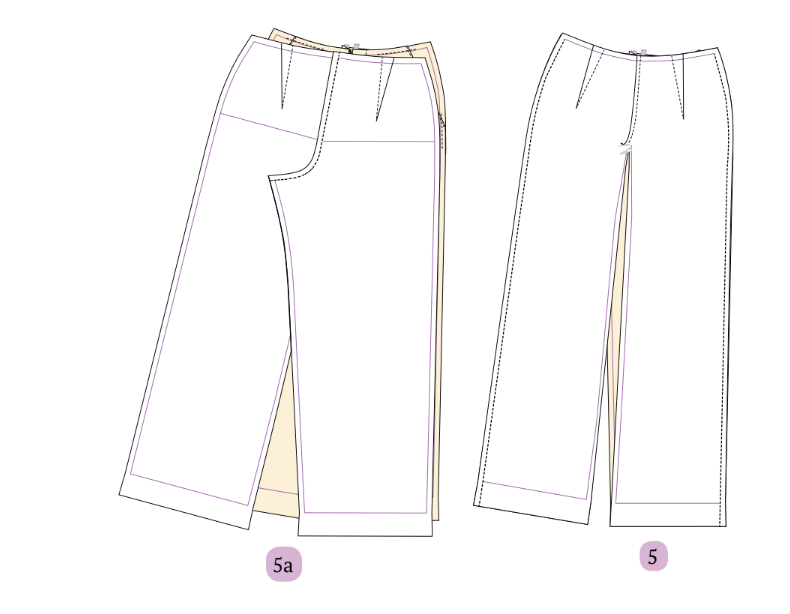
Step 6: Crafting Belt Loops
1. Preparing the Belt Loops
Fold both sides of the belt loops inward.

Fold them again to secure the shape.
Iron the folds to create creases at each fold.
2. Sewing the Loops
Sew along both edges to secure the folds.
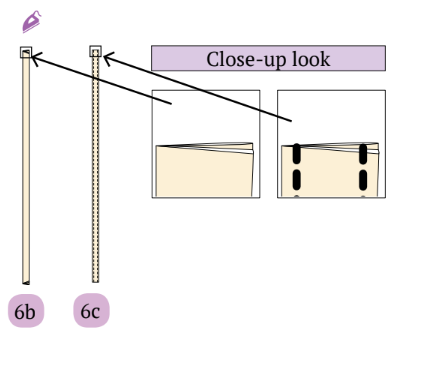
3. Cutting the Loops
Cut five belt loops, each measuring 7.5 cm in length.
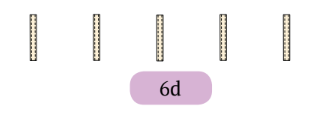
Step 7: Reinforcing the Waistband with Fusible Interfacing
1. Preparing the Fusible Interfacing
Cut fusible interfacing paper to the size of the waistband.
2. Attaching the Interfacing
Iron the interfacing onto the waistband area, avoiding the seam allowance.
3. Finishing the Seam Allowance
Leave the seam allowance untouched.
Iron one side of the seam allowance inside for a neat finish.
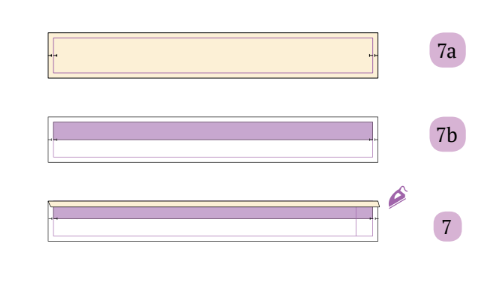
Step 8: Creating a Waistband with Belt Loops
1. Attaching Belt Loops
Pin the 5 belt loops at the mid-back, both sides, and mid-front legs on the waistline.
2. Securing the Waistband
Place the waistband on the waist of the pants with right sides together.
Pin them at an equal length.
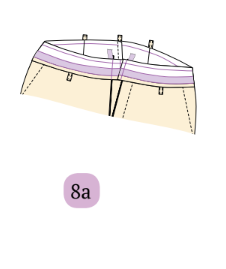
Sew along the seamline of the waistline.
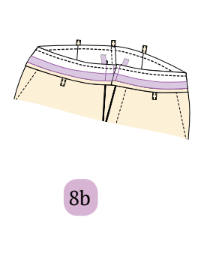
3. Finishing the Waistband
Turn and fold the waist right sides together.
Pin the end of the waistband and sew it to finish the sides of the waistband.
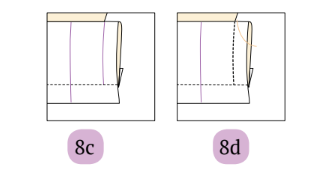
4. Shaping the Corners
Turn it back and use a pointy stick to shape the corners of the waistband.
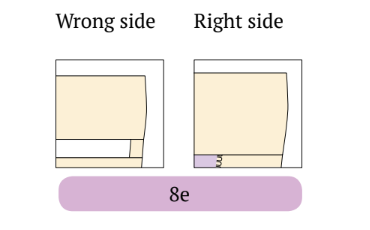
5. Closing the Waistband
Close the waistband by pushing the seam allowance inside.
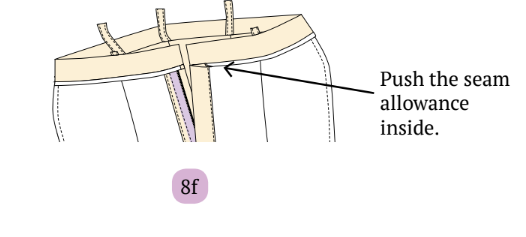
Sew along the edges to close the waistband.
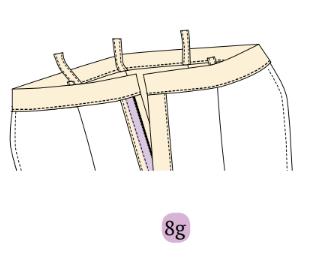
6. Completing the Belt Loops
Fold the belt at 1 cm and sew it at the end to close the belt loop.
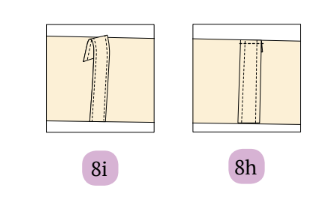
Repeat the same process for the other five belt loops.
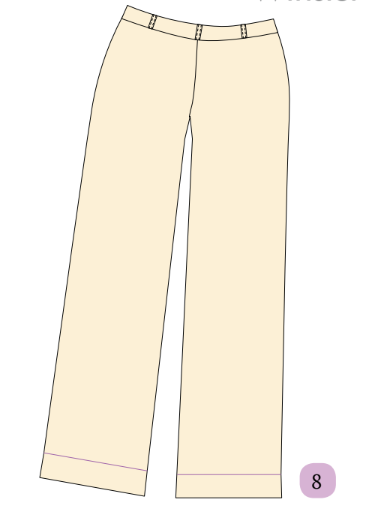
Step 9: Joining Front and Back Pants – Inseam
1. Aligning Front and Back Pants
Match the crotch end of the front and back pants.
Place them together with the right sides facing each other.
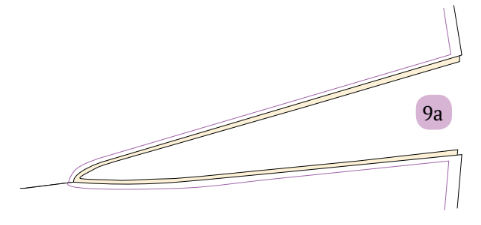
2. Sewing the Inseam
Begin sewing the inseam from one hem to the crotch.
Continue sewing to the other hem end.
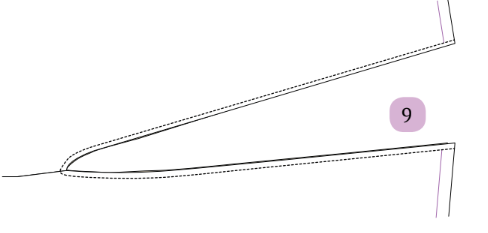
Refer to Figure 9b and 9c for the front and back appearance with the waistbelt and belt loop.
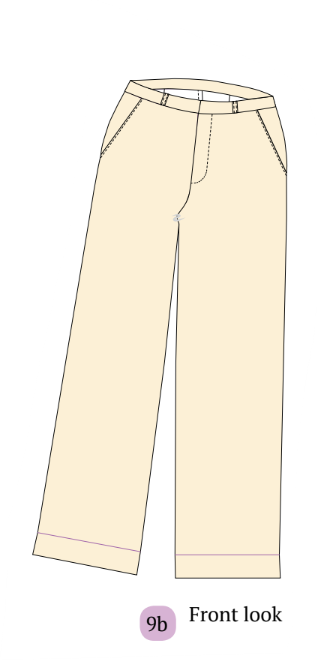
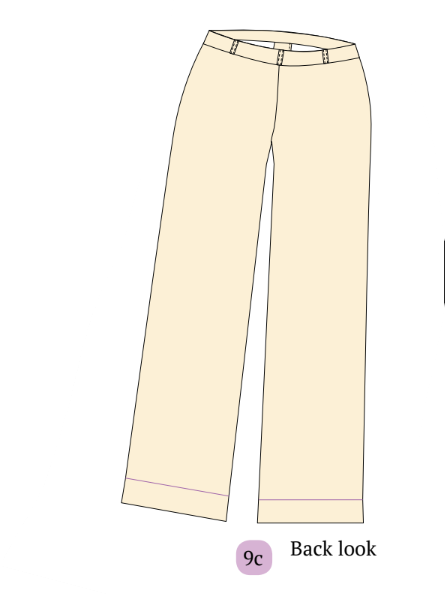
Step 10: Hemming Options for Finishing Touches
1. Using a Hand Needle
Opt for a hand needle to sew the hem with a blind hem stitch.
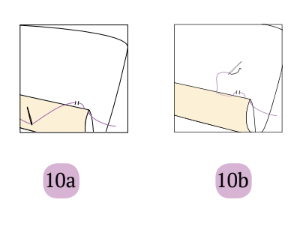
2. Alternative Method – Double Fold and Sew
Alternatively, fold the seam allowance twice inside.
Sew from the front to finish the hem.
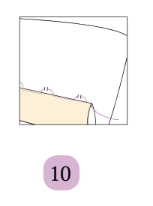
Step 11: Adding Button and Buttonhole to Waistband
1. Creating Buttonhole Stitches
Utilize the button presser to create buttonhole stitches approximately 1.5 cm away from the waistband.
2. Attaching the Button
Sew the button onto the right side of the waistband, aligning it with the buttonhole.
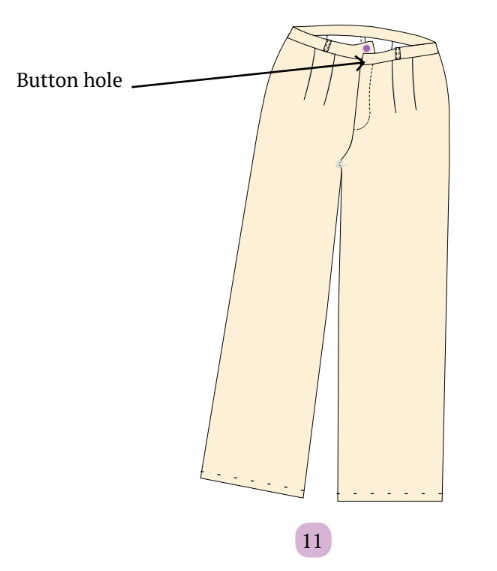
And that’s it! Your wide leg trousers are done and ready to be worn!
Summary
I seriously can’t get enough of these high-waisted wide leg trousers. They exude a polished and chic vibe while being incredibly comfortable, lightweight, and super stretchy.
Check out some final images of this adorable pants created with the Winslet’s MAYA Wide Leg Pants Pattern:
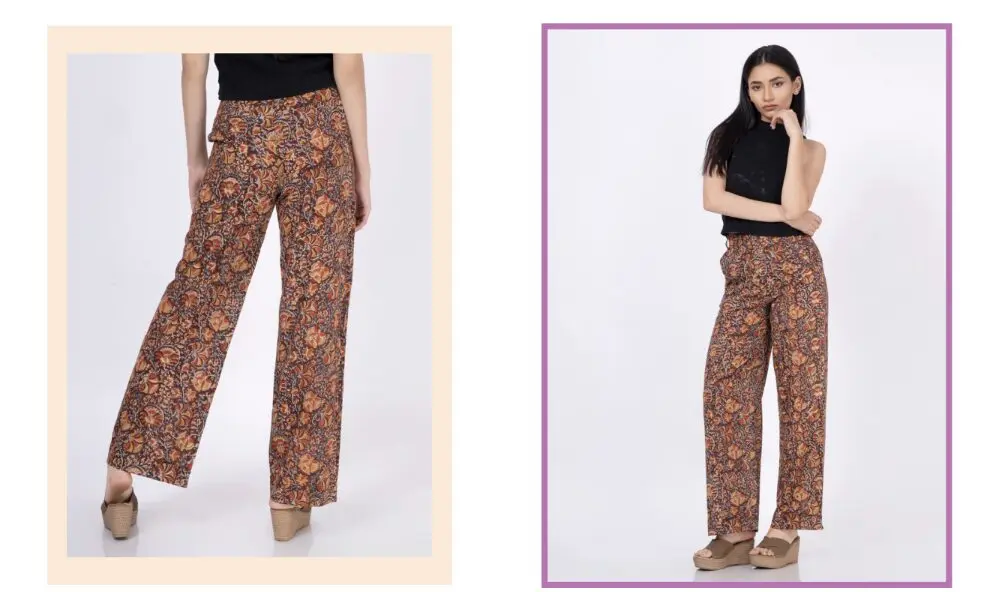
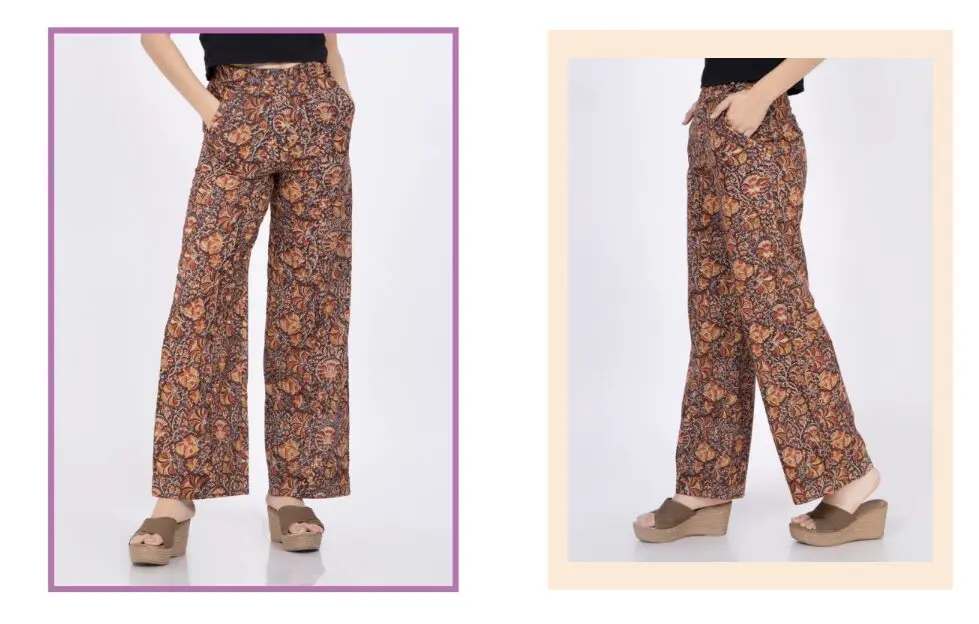
If this is your first time making pants, I hope you’ve enjoyed it. I’d love to see how your wide leg pants turn out, so share photos or tag us on social media.
If you have any questions while working on my projects, just drop a comment—I’m here to help!
Join the Winslet sewing community by sharing your masterpiece with the hashtag #madewithwinslets!
